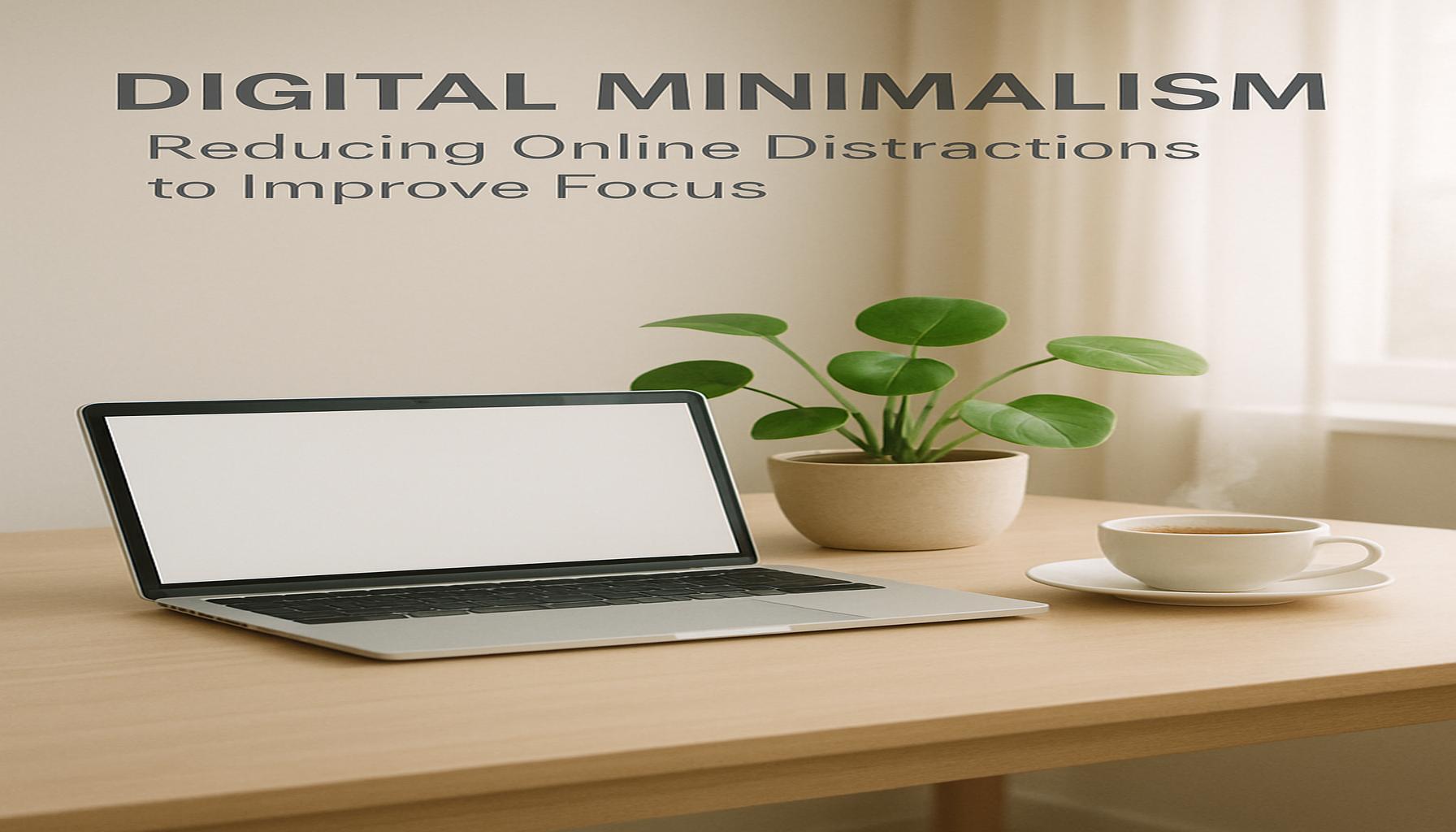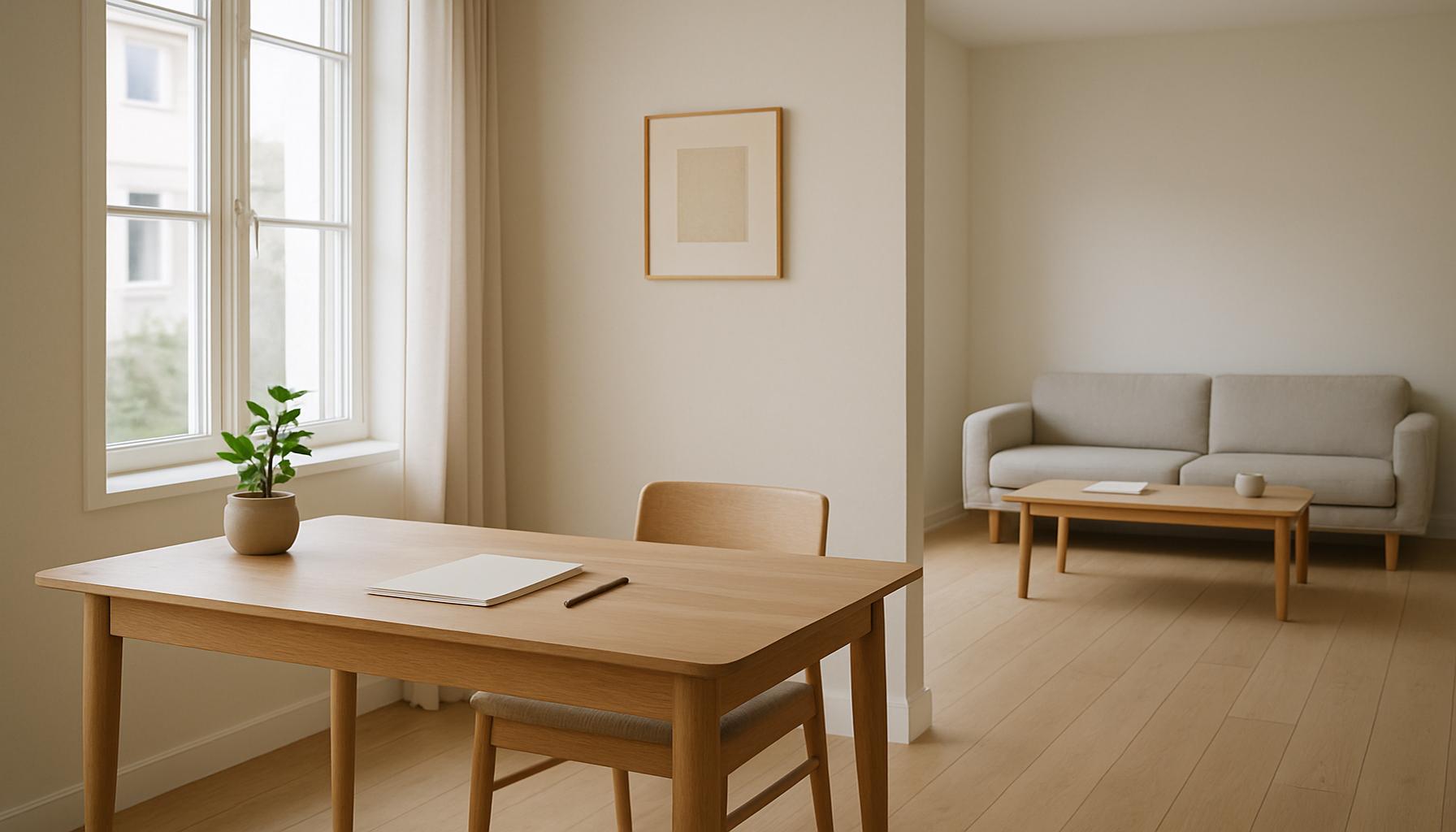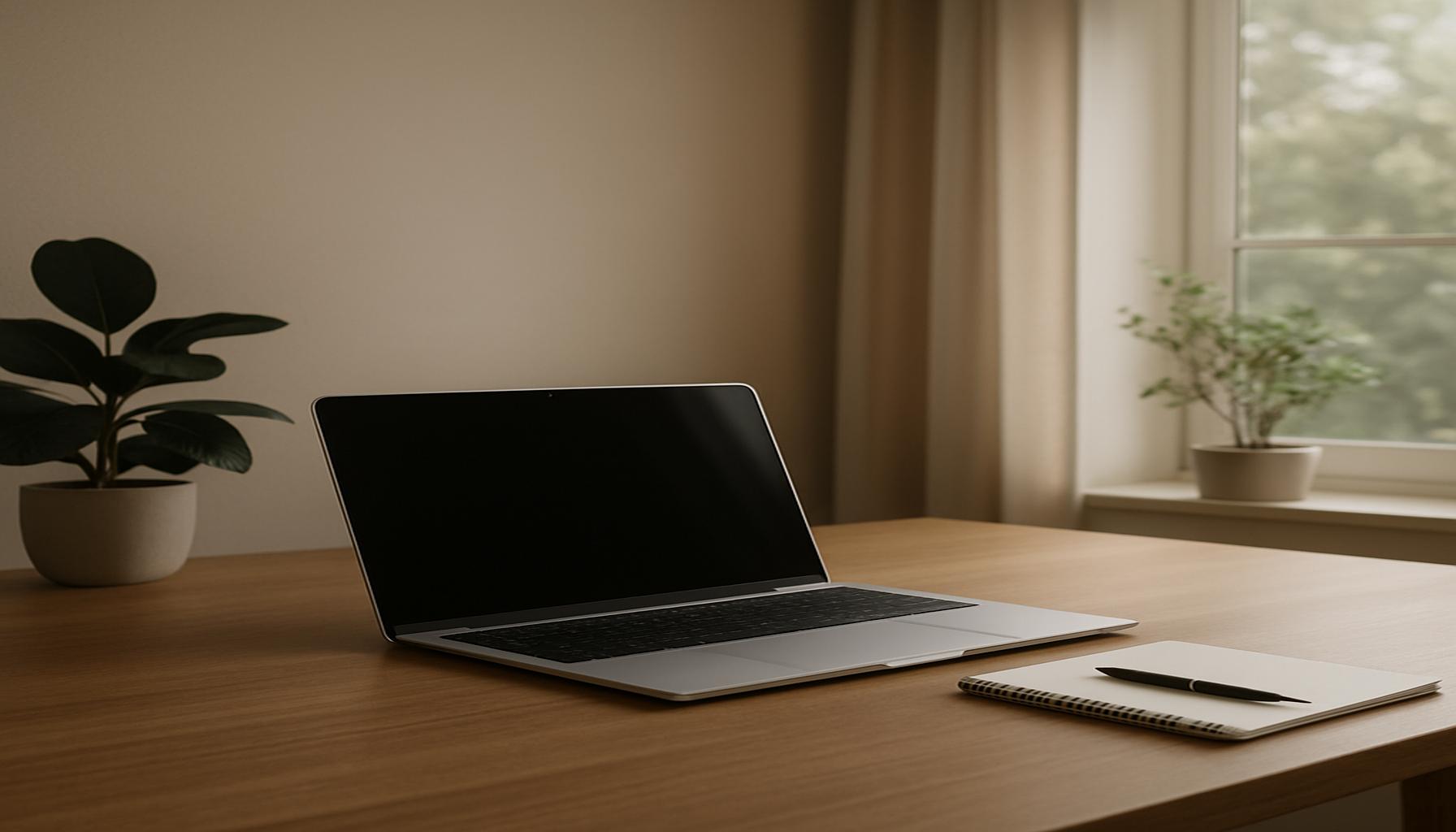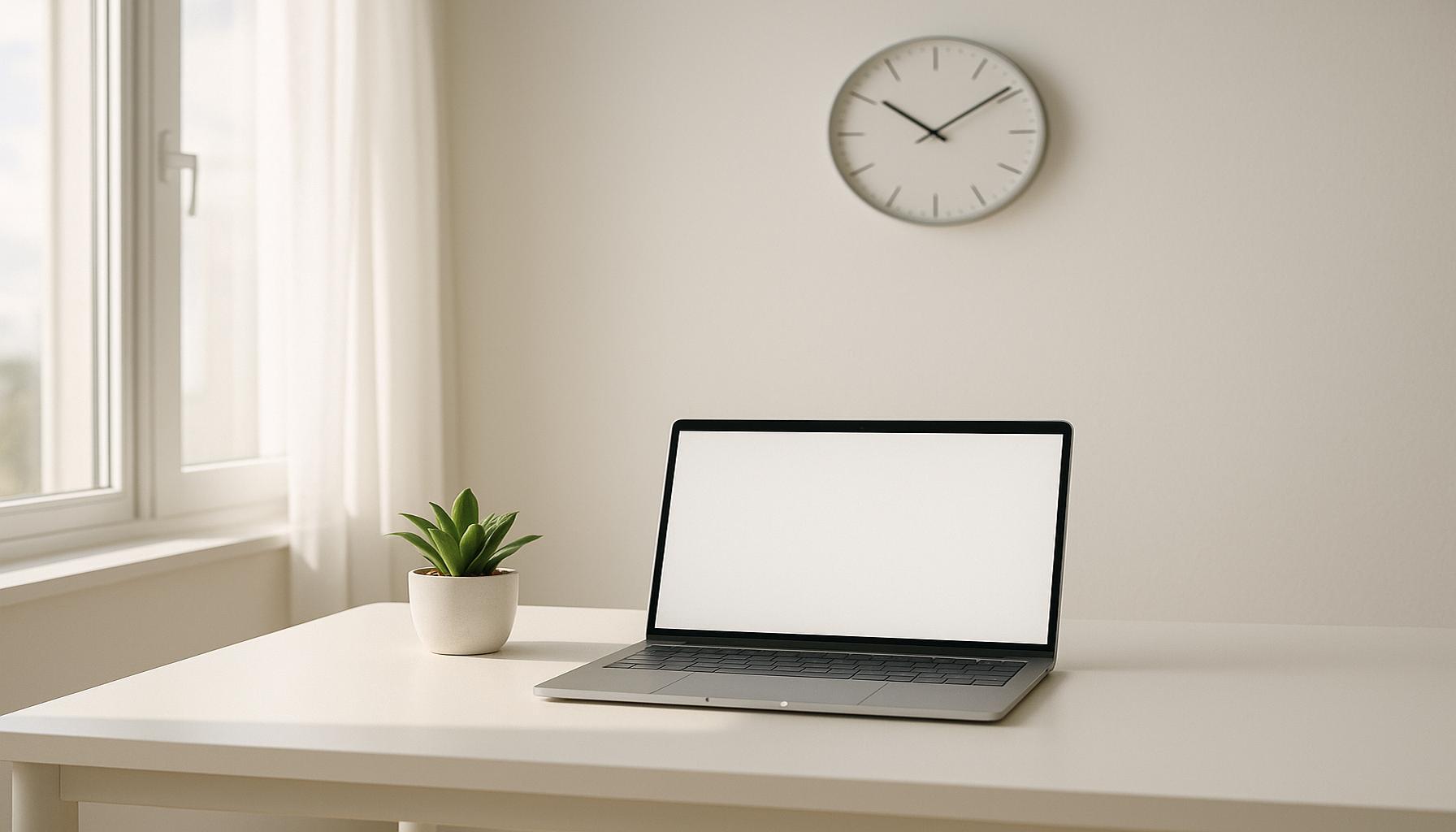Digital Minimalism: How to Reduce Online Distractions to Improve Focus

The Struggle for Concentration in the Modern Age
In a world saturated with screens—from smartphones to laptops—it’s no wonder that maintaining focus has become a formidable challenge for many. A report illustrates that the average American devotes more than 11 hours each day to screen time, leading to a state of sensory overload. This overwhelming digital environment often hampers our ability to concentrate effectively on tasks that demand deep thought and creativity.
Digital minimalism has emerged as a compelling solution for those seeking to reclaim their attention and enhance productivity. This movement advocates for a more intentional relationship with technology, allowing individuals to sift through the noise and hone in on what truly matters. As digital minimalists often suggest, it is not about abandoning technology altogether, but rather about making conscious choices concerning its use.
These statistics reveal the extent of the challenge:
- Research indicates that approximately 70% of smartphone users check their devices within just 5 minutes of waking up, signaling an immediate immersion into the digital world.
- On average, adults spend nearly 2.5 hours each day on social media platforms, leading to an endless cycle of distraction and instant gratification.
- Frequent notifications disrupt our concentration, interrupting focus numerous times each hour and pulling our attention from more pressing tasks.
Embracing a digital minimalist approach allows individuals to combat these distractions and refocus their energy. This philosophy promotes a mindful evaluation of how technology interacts with our daily lives. Here are several practical strategies to get started on this journey:
- **Reducing time-wasting apps and websites:** Audit your apps and eliminate those that do not serve a meaningful purpose or contribute positively to your life.
- **Setting clear boundaries for online activities:** Establish specific times for checking emails or social media, rather than engaging in these activities impulsively throughout the day.
- **Choosing offline hobbies:** Invest time in offline activities such as reading, exercising, or engaging in creative pursuits, which can provide a refreshing balance to the digital interactions that dominate our lives.
As you delve deeper into the exploration of digital minimalism, you’ll uncover techniques that can significantly enhance your productivity and overall well-being. The journey towards improved focus begins with small, deliberate adjustments to your digital lifestyle. By taking control of your technology use, you can foster an environment that supports your goals and allows for richer personal and professional experiences.

DISCOVER MORE: Click here to find out how to declutter your mind and space
Understanding Digital Minimalism: A Path to Focus
The concept of digital minimalism centers around intentionally curating one’s digital environment to foster better concentration and reduce distractions. At its core, this practice calls for individuals to assess their relationship with technology and recognize their triggers for distraction. By carefully selecting apps, websites, and online activities, users can create a more focused digital space, allowing them to channel their energy into tasks that truly matter.
One pivotal aspect of becoming a digital minimalist is the recognition of how compulsive behaviors impact attention spans. According to a study published in the *Journal of Behavioral Addictions*, the average internet user switches tasks approximately every 40 seconds. This constant toggling creates a fragmented attention span that saps productivity and does more harm than good in the long run. Focusing on a single task has been shown to yield better outcomes, such as improved quality of work and a greater sense of accomplishment.
Integrating digital minimalism into daily life can be straightforward with a few practical strategies. Consider the following:
- Audit your digital presence: Take inventory of the apps and social media platforms you use. Ask yourself whether each one adds value to your life or simply consumes your time. If an app leads to more mindless scrolling than meaningful engagement, it may be time to consider its removal.
- Utilize technology intentionally: Schedule specific intervals for technology use to prevent aimless browsing. This could mean designating an hour for emails in the morning or setting aside time during lunch for social media updates, thus creating a structured approach that minimizes random distractions.
- Prioritize deep work over shallow engagement: Allocate focused time blocks for significant tasks that require concentration. During these periods, turn off notifications and place your phone in another room to reduce the temptation to check for updates or messages.
Research has shown that individuals who proactively manage their technology usage report higher levels of satisfaction and achievement in their daily tasks. A study by the Pew Research Center found that 46% of Americans feel overwhelmed by the amount of information online, leading to a desire for less digital clutter and an increased focus on meaningful interactions.
Furthermore, the benefits of digital minimalism extend beyond enhanced focus; they encompass improved mental health and well-being. Users often experience reduced feelings of anxiety and stress when disengaging from the constant influx of notifications and online interactions. This sense of liberation enables them to invest their time in more enriching pursuits, including hobbies, personal projects, and quality time with loved ones.
As the practice of digital minimalism gains traction, it opens the door to a more fulfilling connection with both technology and the world around us. By recognizing that our digital landscape often dictates our attention, we can make deliberate choices to recapture our focus and intention in an increasingly distracted age.
Understanding Digital Minimalism
Digital minimalism is not merely a trend; it’s a lifestyle choice grounded in the pursuit of a more focused and intentional way of engaging with technology. Instead of allowing gadgets and apps to dictate the terms of our daily lives, digital minimalism urges us to reclaim control and design our own digital experiences. The essence lies in the principle that less is more. By consciously curating the tools and platforms we engage with, we can enhance our productivity and well-being.One of the core tenets of digital minimalism is the elimination of digital distractions. The digital age has brought about an overwhelming barrage of notifications, updates, and unsolicited content that clamors for our attention. This omnipresence of information can fragment our focus and diminish our ability to engage deeply with tasks. Research has shown that multitasking, often a deceptive expectation, leads to reduced productivity. Therefore, adopting a minimalist approach can aid in connecting with work and personal goals in a more meaningful way.
Setting Boundaries with Technology
Setting clear boundaries around technology use is crucial. This can be as simple as designating specific times for checking messages or social media. Instead of impulsively reaching for your phone when you feel a slight boredom, practice the art of delayed gratification. Implement app limiters or turn off notifications to create a more peaceful digital environment. The ultimate goal is to create *space*—both physically and mentally—so that you can engage in deeper thought and richer experiences.
Embracing Offline Experiences
Another advantage of embracing digital minimalism is the opportunity to cherish offline activities. Engaging in regular offline experiences, such as reading a physical book, enjoying nature, or nurturing relationships face-to-face can greatly enhance mental clarity. Studies suggest that spending time in nature not only reduces stress but also improves cognitive function and creativity. By replacing screen time with activities that enrich your life, you not only reduce online distractions but also invite a deeper sense of fulfillment.
| Advantages | Key Benefits |
|---|---|
| Enhanced Focus | Reduces cognitive load by limiting digital distractions. |
| Improved Well-being | Encourages deeper connections through offline activities that energize the soul. |
The intentional act of disconnecting not only liberates you from the stress associated with constant digital engagement but also opens doors to mindful living. Take the time to explore how digital minimalism can transform your daily routine, sparking a revolution in personal focus and clarity.
DISCOVER MORE: Click here to find out how
Embracing Change: Strategies to Implement Digital Minimalism
To successfully adopt digital minimalism, it is essential to cultivate a mindset shift that prioritizes intentionality in both digital and offline environments. One of the first steps in this transformative journey is to define your personal values and objectives regarding technology usage. By establishing what truly matters to you—be it productivity, creativity, or meaningful connections—you can more easily discern which digital tools serve these goals and which ones hinder progress.
One innovative approach to minimize online distractions is the practice of time blocking. This technique involves dividing your day into dedicated sections where specific tasks are prioritized, effectively turning your schedule into a focused blueprint. When combined with tools like the Pomodoro Technique, which encourages short bursts of work followed by brief breaks, users can maximize their concentration while keeping distractions at bay. A report from the University of Illinois found that these focused work sessions can improve attention span significantly, allowing for less fragmented work periods.
Moreover, consider the concept of digital detox periods, where you intentionally disconnect from technology for a specified span of time. This could range from a few hours each day to longer weekend breaks. By implementing this regularly, you can experience firsthand the mental clarity that emerges in the absence of constant notifications and social media updates. In a recent survey by the American Psychological Association, 61% of respondents reported feeling a sense of relief when they took breaks from technology, reinforcing the need for such practices in our daily lives.
Another essential component of digital minimalism is the creation of a distraction-free workspace. Whether you are working remotely or in an office setting, curating your environment can significantly impact productivity. This includes removing unnecessary gadgets and notifications that may divert your focus. Consider using tools like website blockers or apps designed to limit your access to distracting sites during work hours. According to a study published in the *Journal of Economic Perspectives*, a clean, organized workspace is associated with higher levels of productivity and effective time management.
For many individuals, social media represents one of the largest sources of online distraction. To combat this, consider re-evaluating your engagement with these platforms. Tools like the digital well-being dashboard, available on most smartphones, can help you track usage patterns and highlight periods of excessive engagement. Setting stricter limits on social media usage can lead to a greater capacity for concentration on tasks that drive personal and professional fulfillment.
Additionally, cultivating alternative activities can serve as an effective antidote to the pull of digital distractions. Engaging in hobbies such as reading, outdoor activities, or creative ventures can yield a deeper sense of satisfaction and fulfillment. A study from the National Endowment for the Arts found that individuals who regularly engage in creative activities experience not only increased focus but also reduced levels of anxiety and depression, exemplifying the benefits of reducing screen time in favor of more enriching pursuits.
In today’s digitized world, the pursuit of digital minimalism allows individuals to recalibrate their engagement with technology. By embracing structured practices and prioritizing activities that align with our values, we can reclaim our focus, enhance our productivity, and foster a more fulfilling connection with both technology and the world around us.
DIVE DEEPER: Click here to discover the benefits of minimalism
Conclusion: The Path to Enhanced Focus through Digital Minimalism
As we navigate an increasingly digital landscape, the challenge of online distractions becomes more pronounced. Embracing digital minimalism is not merely a trend; it’s a strategic approach that empowers individuals to take control of their time and attention. By implementing actionable strategies—such as time blocking, digital detoxes, and creating a distraction-free workspace—you can develop a more focused and intentional relationship with technology.
The evidence is compelling: studies reveal that structured focus techniques can dramatically enhance our attention spans, while regular breaks from screen time can lead to improved mental clarity and reduced anxiety. Furthermore, as we critically assess our engagement with social media, we open up opportunities to connect more deeply with the world around us and dive into enriching activities that foster creativity—not to mention the psychological benefits that stem from reduced device dependency.
Ultimately, digital minimalism serves as a pathway to a more fulfilling life. By prioritizing practices that align with your personal values and goals, you can reclaim your focus and cultivate deeper connections. The journey toward reduced distractions not only enhances your productivity but also enables you to live a more meaningful existence—one that is less dictated by the glow of screens and more guided by your own aspirations and joys. Consider embracing this transformative approach today and discover the profound changes it can bring to both your work and personal life.


